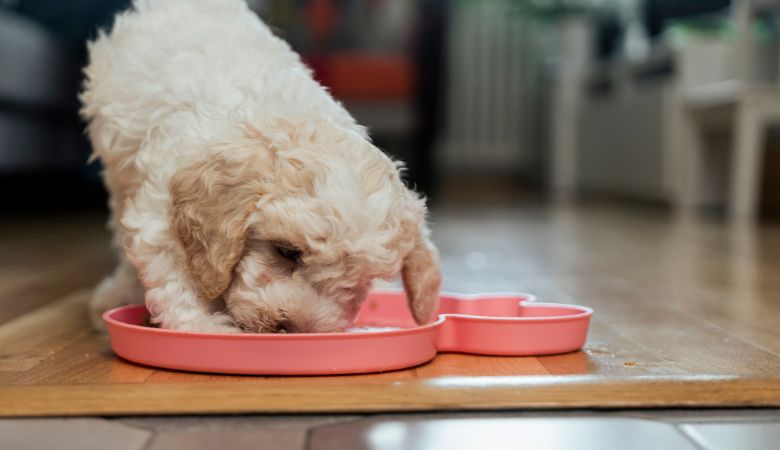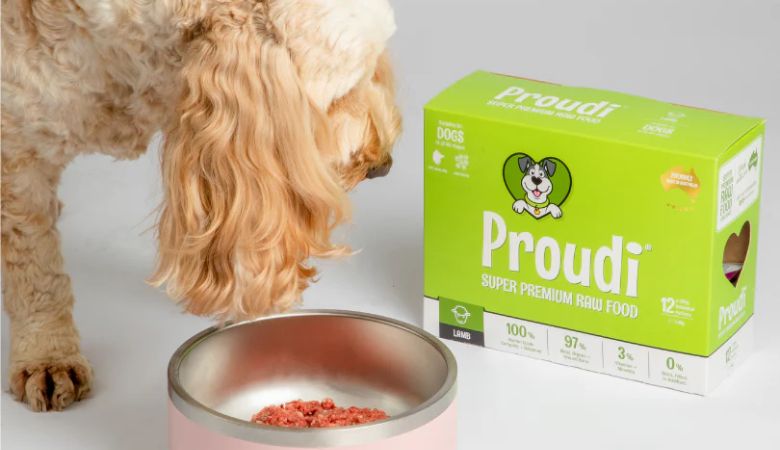Feeding your dog a raw diet has become an increasingly popular choice among pet owners seeking a natural and nutritious option for their pets. However, this approach comes with its own set of concerns and misconceptions that can make pet owners hesitant to make the switch and question, “Is raw feeding safe for dogs?”
In this article, we'll address some of the top concerns and misconceptions about feeding your dog raw, and provide insights to help you make an informed decision.

-
Risk of Bacterial Contamination
Concern: Raw meat can carry harmful bacteria like Salmonella, E. coli, and Listeria, which can pose health risks to both dogs and humans.
Reality: While raw meat does have the potential for contamination, there are ways to mitigate this risk. Sourcing high-quality ingredients from reputable suppliers, practicing proper handling and storage, and maintaining cleanliness can significantly reduce the chances of bacterial contamination. It's also important to wash your hands, utensils, and surfaces thoroughly after handling raw meat.
-
Nutritional Imbalance
Concern: It's challenging to ensure a balanced diet that meets all of a dog's nutritional needs through raw feeding.
Reality: Achieving a balanced raw diet requires careful planning and variety. Including different protein sources, organs, and bones, along with occasional supplements, can help ensure your dog receives a complete range of nutrients. Consulting with a veterinarian or a canine nutritionist can provide you with the extra guidance to create a well-rounded raw diet if you are unsure.
-
Risk of Choking or Dental Fractures
Concern: Whole bones can pose a choking hazard or cause dental fractures.
Reality: Selecting the right type and size of bones, along with supervising your dog while they eat raw bones, can help mitigate these risks. It's essential to feed only raw bones, as cooked bones can splinter and cause severe injuries. Raw bones are generally safer and offer dental benefits by cleaning teeth and massaging gums.
When choosing raw meaty bones, consider not only your dog's size but also their chewing behaviour. Additionally, due to their high density, it is advisable to avoid feeding weight-bearing bones.

-
Parasites
Concern: Raw meat and organs can harbor parasites that might infect dogs.
Reality: Freezing meat at appropriate temperatures for a specified period can kill most parasites. Sourcing meat from reputable suppliers who follow strict quality control measures also reduces the risk of parasite contamination. Additionally, regular deworming and veterinary check-ups can help keep your dog safe from parasites.
-
Digestive Upset
Concern: Transitioning to a raw diet can cause digestive issues like diarrhea or vomiting.
Reality: A gradual transition to a raw diet can help prevent digestive upset. Start by introducing small amounts of raw food alongside your dog's current diet, and gradually increase the raw portion over a week or two.
This allows your dog's digestive system to adjust and reduces the likelihood of digestive issues.
-
Cost and Time
Concern: Raw feeding can be more expensive and time-consuming compared to commercial dog food.
Reality: While raw feeding does require more effort and can be costlier, planning, budgeting, and preparing meals in bulk can make it more manageable. Investing in your dog's health by providing a natural and nutritious diet can also lead to long-term savings on veterinary bills.
-
Misconceptions About Safety
Concern: There are myths that raw feeding can cause aggression or make dogs bloodthirsty.
Reality: There is no scientific evidence to support these claims. A dog's behaviour is influenced by various factors, including training, environment, and genetics, rather than diet alone. Raw feeding can actually provide mental stimulation and enrichment for dogs, promoting overall well-being.
-
Veterinarian Concerns
Concern: Some veterinarians may not support raw feeding or may lack knowledge about it.
Reality: It's essential to seek veterinarians or canine nutritionists who are knowledgeable and supportive of raw feeding. They can provide valuable guidance and help you ensure your dog's diet is balanced and safe.
-
Human Health Concerns
Concern: Handling raw meat can increase the risk of bacterial contamination to humans.
Reality: Practicing proper hygiene, such as washing hands and sanitising surfaces, can help mitigate this risk. Keeping raw meat separate from other foods and using dedicated utensils for raw food preparation are also important steps to ensure safety.

Conclusion
While there are valid concerns and misconceptions about feeding a raw diet, many of these can be addressed with proper education, planning, and precautions. Consulting with knowledgeable professionals and staying informed can help you provide a safe and balanced raw diet for your dog. By understanding and overcoming these challenges, you can ensure that your dog enjoys the benefits of a natural and nutritious diet.


